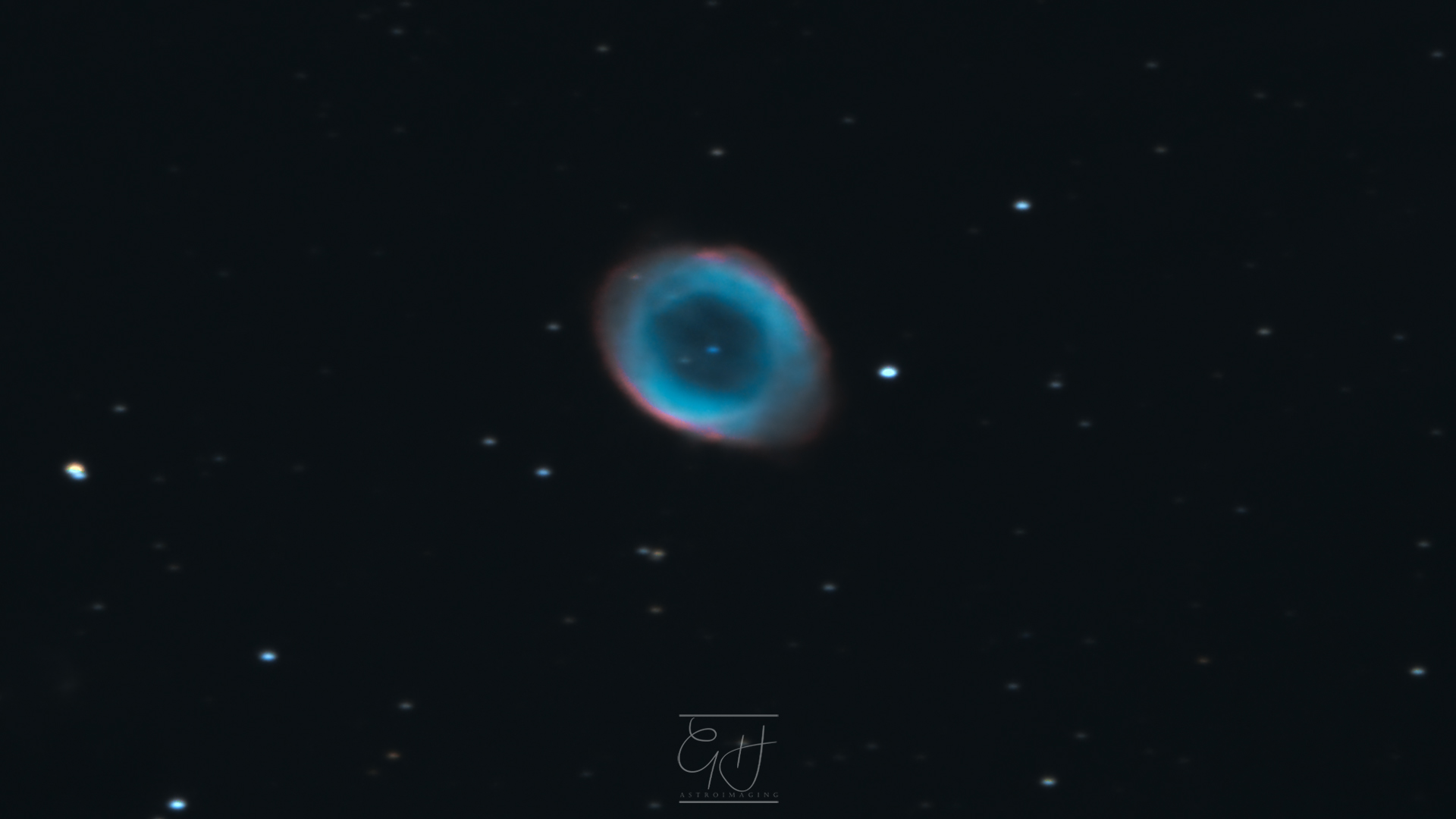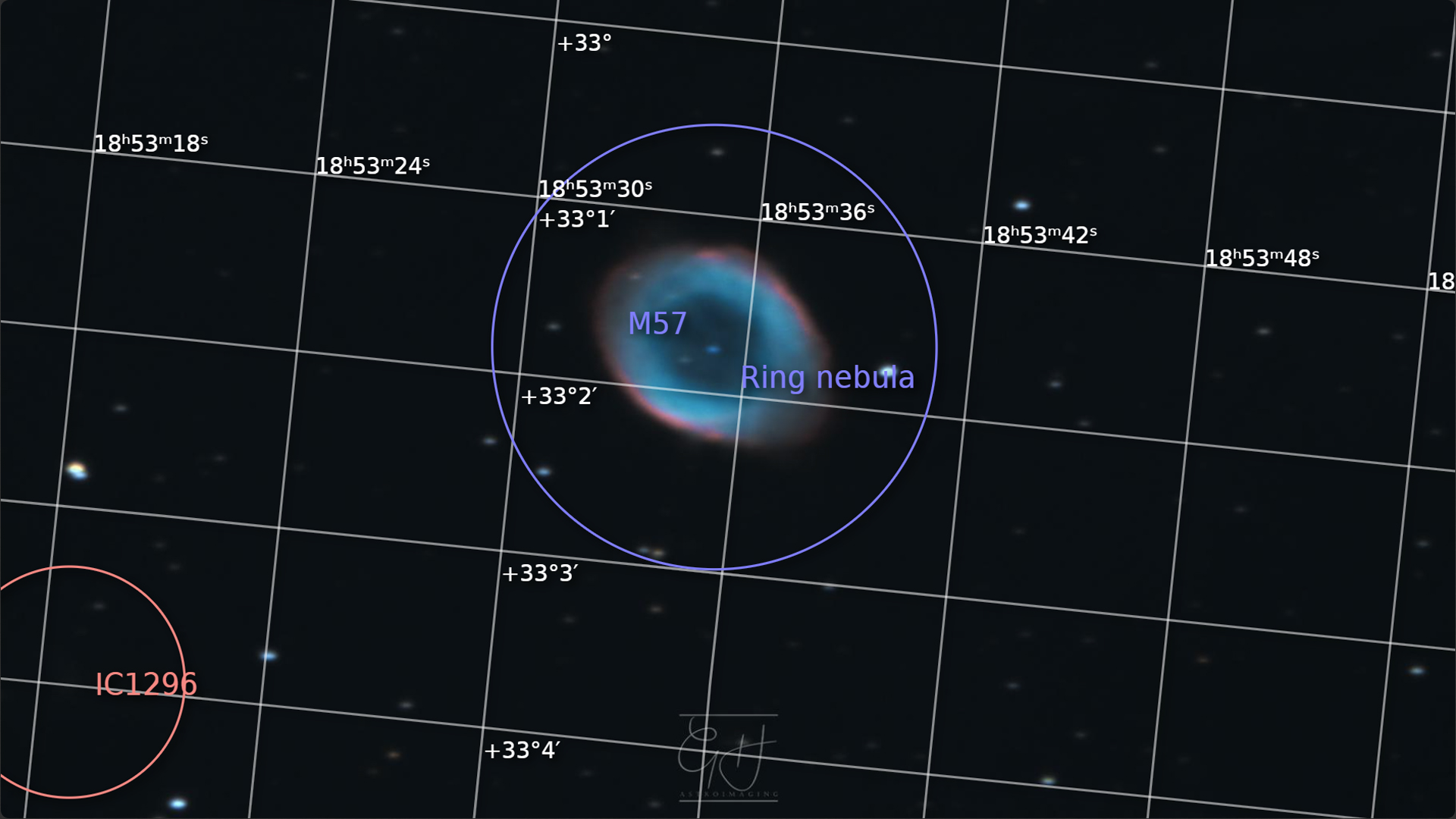The Ring Nebula, September 17 2020


The Ring Nebula, also known as M57 or NGC6720, is a planetary nebula in the constellation Lyra.
More information about this object can be found on its Wikipedia page.
The capture and subsequent processing of this object brought some new challenges for me. I decided to buy a different camera with very small pixels, primarily for the purpose of close up moon imaging, or some planetary imaging. Whilst learning about its capabilities though, I tried a few sessions on some small targets that aren't suited to my other scope and camera combinations.
The main difficulty here was that the image scale being captured is so small that it's almost impossible to prevent parts of the image being smeared over multiple pixels on the camera sensor. You can clearly see the egg shaped stars in this image that result from imperfect tracking of my mount. Another new factor in processing this image was the need for dark frames in calibration. I've never bothered taking dark frames when shooting with my DSLR cameras, because it's not really clear that it brings any improvement for a range of different reasons. With this new camera though, I was seeing for the first time a phenomenon known as amp glow, where a kind of starburst effect can be seen on the images as a result of thermal effects within the camera. Taking dark frames for calibration was successful in removing this effect from the final image as well as in correcting for hot and cold pixels on the sensor (pixels with either too much or too little response to the photons they capture), and the increased sensitivity of a dedicated astronomy camera gave me my first indication of how much improvement I might see by moving in this direction for all my imaging.
You can view this image in the WorldWideTelescope by clicking here.










Sign in to enable commenting